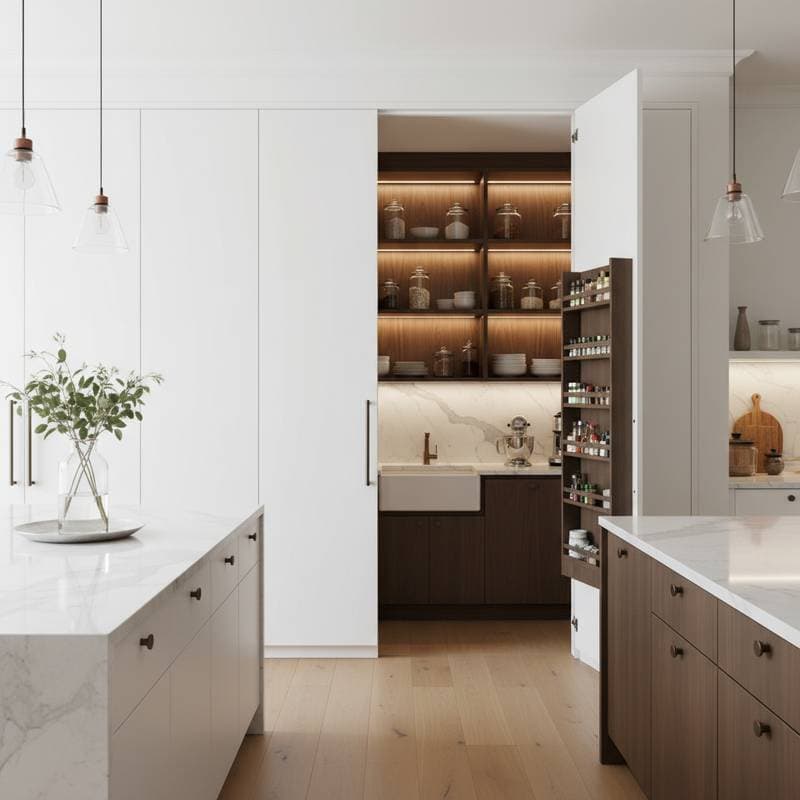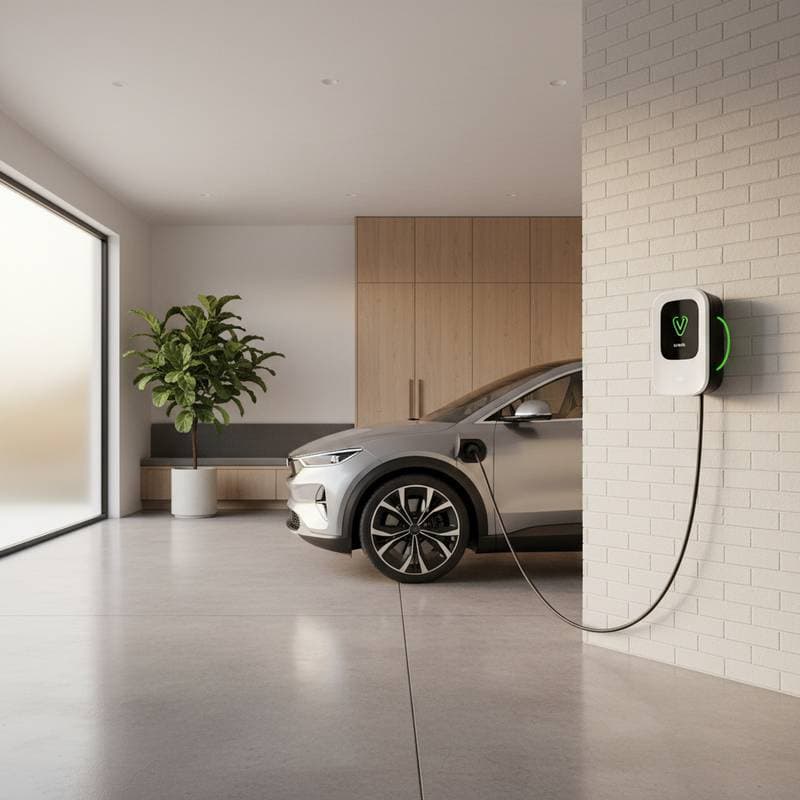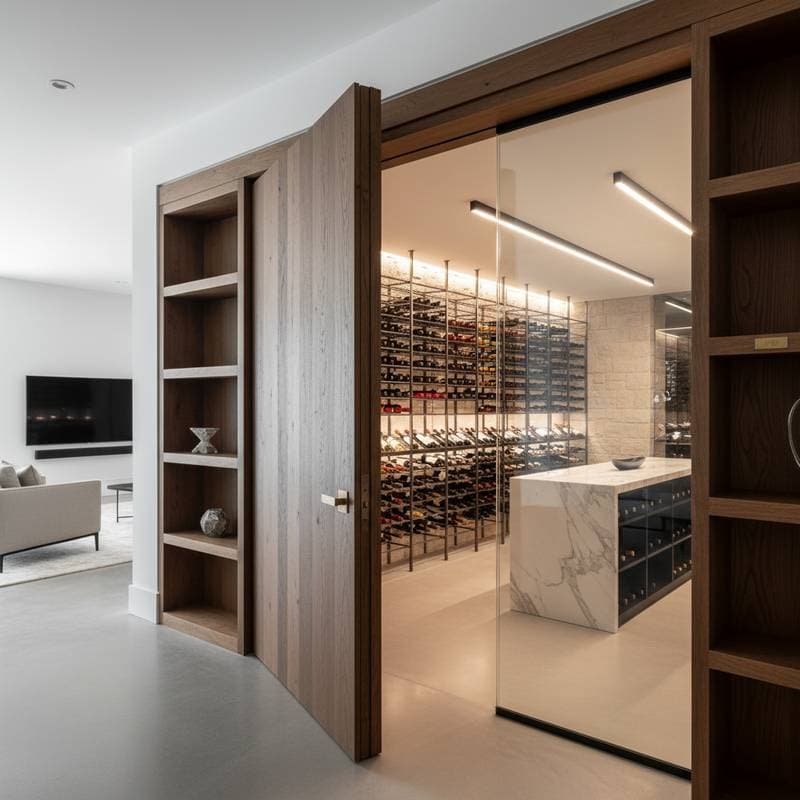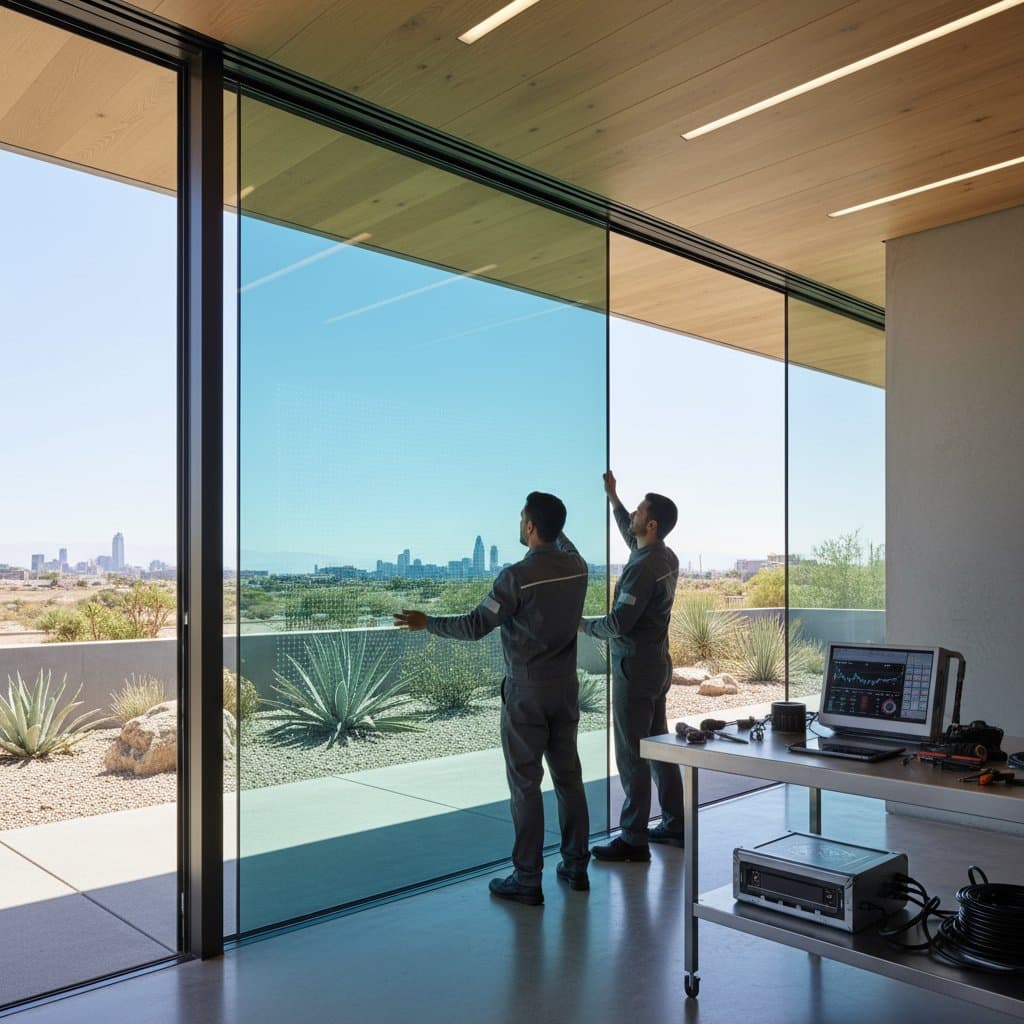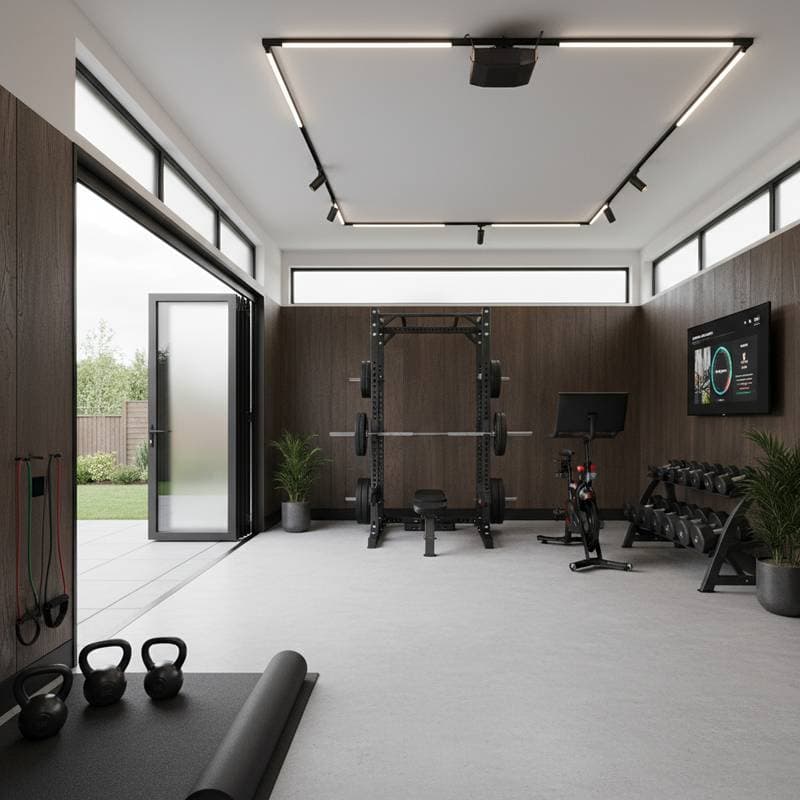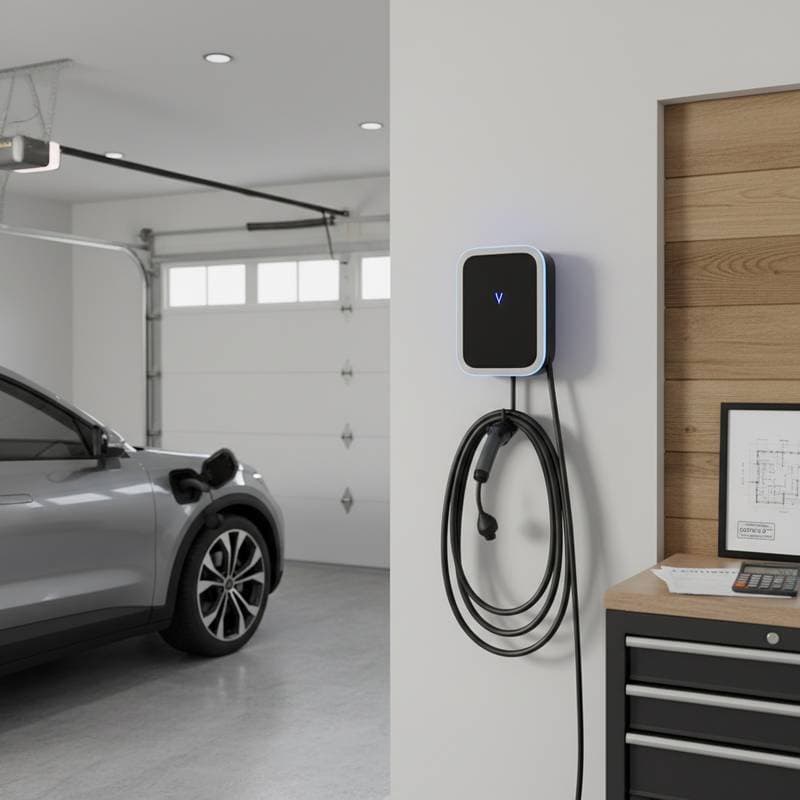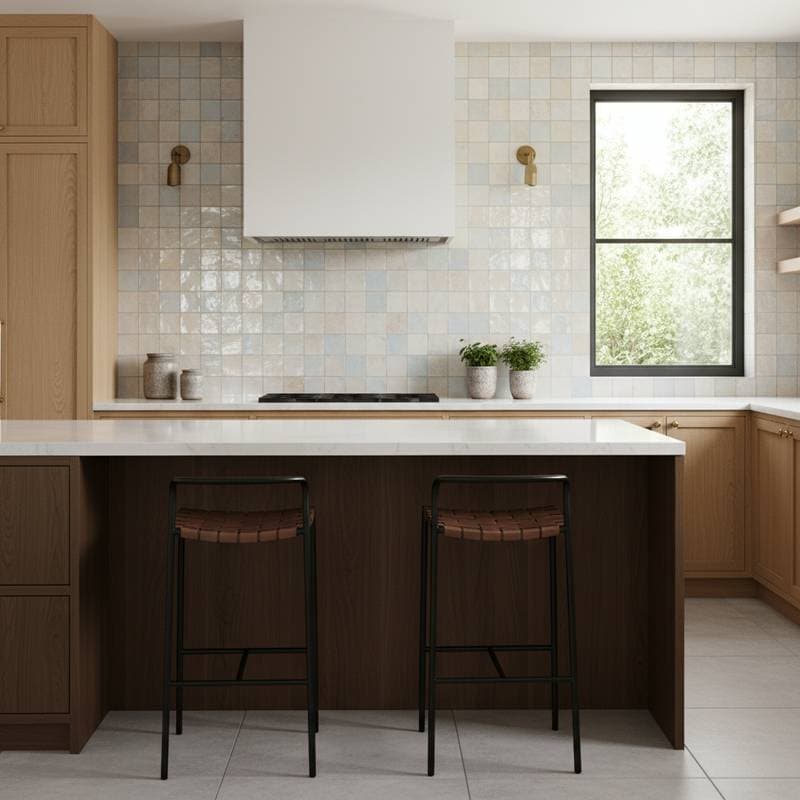Hidden Pantries: A Smart Upgrade for 11% Home Value Growth in 2025
Homeowners seeking to enhance kitchen functionality and appeal often overlook hidden pantries. These concealed storage solutions integrate seamlessly into cabinetry, offering ample space without disrupting visual flow. In 2025, real estate trends favor such features, with experts projecting an average 11 percent increase in home value for properties equipped with them.
Buyers appreciate the organized storage that hidden pantries provide, especially in open-concept layouts. The installation process transforms underutilized areas into efficient zones for dry goods, appliances, and utensils. Beyond aesthetics, these additions support resale by signaling thoughtful design and modern convenience.
Key Cost Factors to Consider
Budgeting for a hidden pantry requires attention to several variables that influence the overall expense. Initial estimates typically fall between $4,800 and $11,500, depending on scope and materials. Early planning helps avoid surprises and ensures alignment with financial goals.
Size and Layout
The dimensions and configuration drive a significant portion of costs. A spacious walk-in unit concealed behind cabinet doors demands more materials and labor than a compact pull-out shelf. Structural builds average $180 to $250 per square foot, while retrofits into existing spaces cost $90 to $140 per square foot.
Larger layouts may require additional framing or wall modifications to accommodate doors and shelving. Smaller options suit tight kitchens, minimizing disruption while delivering practical storage. Measure your space precisely to select the most cost-effective design.
Finish Materials
Material selections affect both durability and appearance. Basic options like paint-grade plywood and melamine shelves keep expenses low for everyday use. Premium choices, such as hardwood cabinet fronts and quartz countertops, elevate the finish and can add $1,500 to $3,000 to the total.
Consider the kitchen's overall style when choosing finishes. Matching existing cabinetry ensures a cohesive look that enhances perceived value. Durable materials also withstand daily wear, preserving the investment over time.
Concealment Method
Effective hiding relies on innovative entry mechanisms. A simple pivoting cabinet door adds approximately $600 to the project. More advanced full-height panels with concealed hinges range from $1,200 to $2,000, offering a flush integration.
Sliding panels integrated behind standard cabinetry present greater complexity, often necessitating skilled carpentry. Evaluate accessibility needs, as frequent use favors smooth-operating doors. Professional installation guarantees secure and silent operation.
Lighting and Electrical
Illumination inside the pantry improves usability and highlights contents. LED strips or motion-activated sensors provide efficient lighting, costing $250 to $750 based on setup. Relocating outlets or extending circuits incurs extra fees of $400 to $600, including electrician labor and permits.
Prioritize energy-efficient options to reduce long-term costs. Proper wiring prevents hazards and complies with safety standards. Consult local codes early to streamline this aspect.
Permits and Structural Work
Any changes to walls or systems may trigger permit requirements. Fees average $200 to $400, varying by location. Structural assessments ensure safety, particularly when addressing load-bearing elements.
Engage a professional inspector for complex modifications. This step avoids delays and protects against fines. Document all approvals to support future resale documentation.
Disposal and Cleanup
Post-construction tasks include debris removal, drywall patching, and surface refinishing. Allocate $300 to $600 for these essentials. Factoring them in from the start maintains project momentum.
Hire licensed services for hazardous waste handling. A clean finish-up enhances the overall result and prepares the space for immediate use.
DIY Options Versus Professional Installation
Hidden pantries demand precision to function flawlessly. Determine your skill level to decide between self-guided efforts and expert help. This choice balances cost savings with quality outcomes.
Tasks Suitable for DIY
- Demolition and basic framing in non-load-bearing walls.
- Assembling and installing pre-fabricated shelving kits.
- Applying paint, stain, or trim for a polished look.
- Setting up plug-in LED lighting without new wiring.
These steps suit experienced homeowners with basic tools. Follow tutorials for best results, and test fits before permanent installation.
When to Hire Professionals
Opt for experts in scenarios involving plumbing, electrical work, or load-bearing alterations. Custom door matching and precise hinge installations also benefit from specialized skills. Local building codes often mandate inspections for wall changes.
Professionals mitigate risks and ensure code compliance. Expect moderate to high risk levels for structural projects without experience.
Essential Tools and Safety Measures
Gather a drill, saw, stud finder, level, sander, and protective gear. Always disconnect power sources before cutting into walls. Scan for hidden utilities using detection tools.
Wear respirators, eye protection, and gloves to manage dust and debris. Maintain a well-lit workspace and keep emergency equipment accessible. These precautions prevent accidents and protect health.
Design Tips for Maximum Appeal
Thoughtful design turns a hidden pantry into a standout feature. Focus on functionality and integration to align with buyer preferences. Incorporate elements that enhance daily use and long-term value.
Select adjustable shelving for versatility in storing items of varying sizes. Integrate pull-out drawers for smaller goods and deep bins for bulk storage. Neutral interiors with task lighting create an inviting, efficient space.
Match the pantry door to surrounding cabinetry for invisibility. Consider soft-close mechanisms to reduce noise in open kitchens. These details contribute to the seamless aesthetic that drives market demand.
Maintenance for Long-Term Durability
Proper care extends the lifespan of a hidden pantry, often spanning decades. Regular attention preserves appearance and functionality, safeguarding resale potential.
Daily and Routine Upkeep
Clean shelves monthly to eliminate dust accumulation. Inspect and adjust hinges annually for smooth operation. Replace LED components every five to seven years as needed.
Apply sealant to wooden surfaces every three years to resist humidity. Maintain indoor humidity below 55 percent to avoid warping. Ventilation features, like louvers, promote air circulation and protect contents.
Warranty and Longevity Insights
Hardware warranties cover one to five years, while custom structures offer five years on finishes and ten on frameworks. Lighting systems vary from two to five years by manufacturer.
Select quality brands for extended coverage. Document installations to facilitate claims. These practices ensure the feature remains a asset rather than a liability.
Safety and Building Code Essentials
Compliance with regulations protects occupants and upholds property standards. Hidden pantries involve potential hazards that require careful handling.
Common Permit Requirements
Obtain approvals for electrical modifications, structural removals, or space expansions. These steps prevent legal issues and ensure insurability.
Consult local authorities early in planning. Professional guidance simplifies the process and avoids rework.
Protective Equipment and Hazard Prevention
Use dust masks, safety glasses, gloves, and ear protection during construction. Employ stud finders with wire tracers to locate utilities.
Verify absence of gas or plumbing lines in target areas. Position fire extinguishers nearby for woodworking tasks. Adhering to these protocols minimizes risks and supports safe execution.
Market Trends and Investment Returns
Hidden pantries align with evolving preferences for streamlined kitchens. As minimalism gains traction, these features transition from novelties to essentials. Real estate data indicates stronger interest from buyers prioritizing integrated storage.
Properties with hidden pantries often achieve 11 percent higher valuations in modern settings. They appeal to those desiring clean aesthetics and hidden efficiency. In competitive markets, such upgrades accelerate sales and justify premium pricing.
Mid-range installations yield optimal returns, costing far less than comprehensive remodels yet delivering comparable prestige. Sellers recover a substantial portion of expenses through enhanced buyer perception.
Steps to Implement Your Hidden Pantry
Begin by assessing your kitchen's layout and storage needs. Consult a designer or contractor to sketch options within your budget. Secure quotes from multiple sources to compare value.
Schedule permits and preparations promptly to meet timelines. During installation, monitor progress to address issues early. Once complete, organize contents strategically for peak performance.
This upgrade not only organizes your space but also positions your home favorably in 2025's market. Enjoy the benefits of added value and convenience today.

